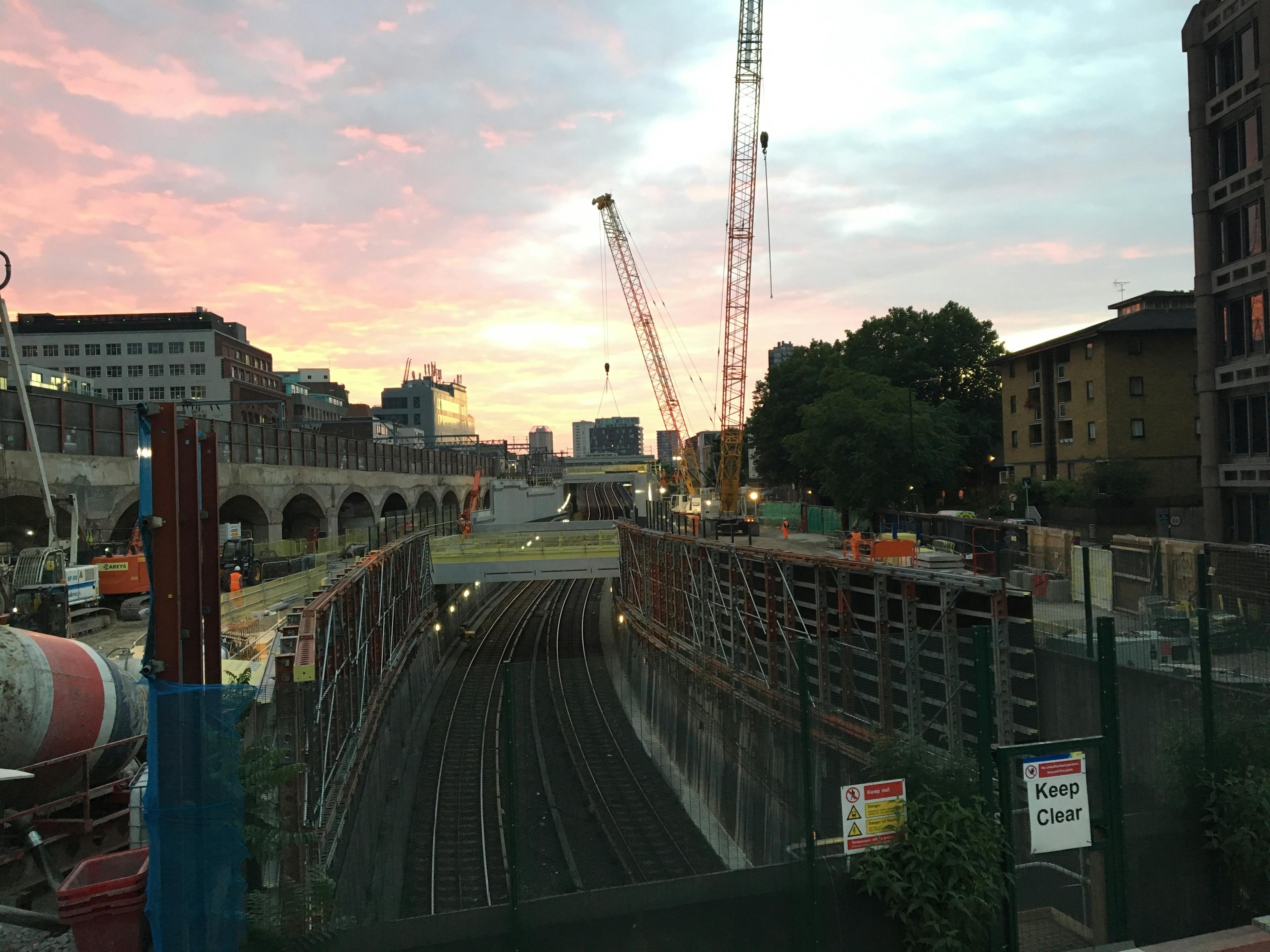
Royal Mint Gardens
Careys was awarded the design and build contract to construct a precast encapsulation structure over the existing Docklands Light Railway (DLR) lines at Bank Station exit tunnel. The completed structure extended for 150m from the tunnel face, where our detailed pre-construction project planning was crucial to ensuring safe working in the live rail environment, overcoming tight site boundaries at one of London’s busiest interchange stations.
Client
Royal Mint GardensLocation
Whitechapel, LondonPrincipal Contractor
CareysServices
Our team constructed the encapsulation structure including piled foundations, precast concrete wall panels, along with a precast T-beam roof structure. We were also responsible for the construction of new escape platforms within the encapsulation structure, along with diversion and installation of services. Our team also constructed a dedicated mechanical room on top of the encapsulation, housing smoke evacuation fans to service the tunnel in the event of a fire on the DLR.
We also part-demolished the local underground railway viaduct as part of the enabling works for the site. The overground structure was retained and remained in use during the demolition. To prevent impact upon the live railway, we undertook real-time monitoring of engineering works and overnight work on sensitive elements of work such as services.
Innovative technique enables piling works without disruption at one of London’s busiest interchange stations
Innovative technique enables piling works without disruption at one of London’s busiest interchange stations
In addition to the live environment and national rail viaduct, one of the site boundaries contained a section of London’s Cycle Superhighway, and the main entrance is situated on a one-way street. To overcome the potential risk to the public, our team implemented various measures, including careful traffic management, screens and auger protection to avoid spoil affecting the local area or railway, and the use of innovative piling techniques to avoid lateral pressure which could affect existing structures.
Our use of a cased secant piling technique has protected the existing live structure we are working alongside. This technique has enabled piling works within the tight site, whilst also ensuring accuracy of the constructed piles. Our use of this technique enabled the team to undertake piling works without causing disruption to the DLR schedule at one of London’s busiest interchange stations.
We'd love to hear from you, so please get in touch